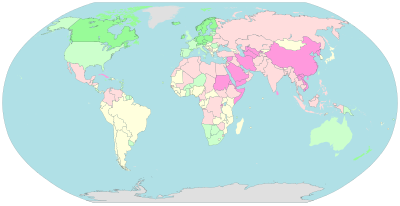Telecommunications in New Zealand are fairly typical for an industrialised country.
Television in New Zealand was introduced in 1960 as a state-run service. The broadcasting sector was deregulated in 1989, when the Government allowed competition to the state-owned Television New Zealand (TVNZ). There are currently three forms of broadcast television: a terrestrial (DVB-T) service provided by Freeview; satellite services provided nationwide by both Freeview and Sky; and an internet television service delivered over cable and fibre broadband.

Television New Zealand, more commonly referred to as TVNZ, is a state-owned television network that is broadcast throughout New Zealand and parts of the Pacific region. Although the network identifies as a national, part-public broadcaster, it is fully commercially funded.
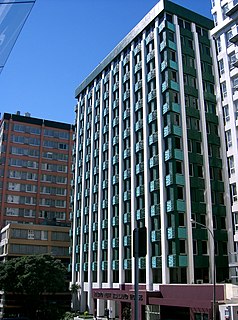
Radio New Zealand, commonly known as Radio NZ or simply RNZ, is a New Zealand public-service radio broadcaster and Crown entity that was established under the Radio New Zealand Act 1995. It operates a news and current-affairs network, RNZ National, and a classical-music and jazz network, RNZ Concert, with full government funding from NZ on Air. Since 2014, the organisation's focus has been to transform RNZ from a radio broadcaster to a multimedia outlet, increasing its production of digital content in audio, video, and written forms.

Sky Network Television Limited is a New Zealand pay television satellite TV provider. It is also a wholesale channel provider to New Zealand cable television provider Vodafone. On 1 February 2020, Sky had 925,000 subscribers consisting of 599,000 satellite subscribers and 326,000 streaming subscribers. Despite the similarity of name and services, such as Sky Go and MySky shared with its British equivalent, Sky, there is no longer a connection between the companies.
Radio broadcasting began in New Zealand in 1922, and is now dominated by almost thirty radio networks and station groups. The Government has dominated broadcasting since 1925, but through privatisation and deregulation has allowed commercial talk and music stations to reach large audiences. New Zealand also has several radio stations serving Māori tribes, Pacific Island communities, ethnic minorities, evangelical Christians and special interests.

Newstalk ZB is a nationwide New Zealand talk radio network operated by NZME Radio. It is available in almost every radio market in New Zealand, and has news reporters based in many of them. In addition to talkback, the network also broadcasts news, interviews, music, and sports. The network's hosts include Mike Hosking, Kerre McIvor, Marcus Lush, Jack Tame, Simon Barnett and Phil Gifford. Wellington and Christchurch have a local morning show.

Kordia is a New Zealand government-owned broadcast and telecommunications company, operating in Australia and New Zealand. It provides national communications services for broadcast and telecommunications customers in New Zealand, as well as specialised network systems. New Zealand customers include: Vodafone New Zealand, 2degrees, Sky Television, TVNZ, Mediaworks, Radio New Zealand, Spark New Zealand, Freeview, and The Radio Network. In Australia, Kordia provides contracting and consulting services for major telecommunications players, including Telstra, Optus, Vodafone and Hutchison.
Te Māngai Pāho is the New Zealand Crown entity responsible for the promotion of the Māori language and Māori culture by providing funding for Māori-language programming on radio, and television.

World TV is a New Zealand television, radio and print media company specialising in media for Asian migrants and Asian language communities. It operates eleven specialist television channels and publishes a national-circulation magazine for subscribers of its five Sky TV digital television packages. It also broadcasts two free-to-air television channels on the Freeview platform and three 24-hour radio networks through terrestrial radio and Sky TV.

Freeview is New Zealand's digital terrestrial television platform. It is operated by a joint venture between the country's major free-to-air broadcasters – government-owned Television New Zealand and Radio New Zealand, government-subsidised Māori Television, and the Australian-owned MediaWorks New Zealand. It consists of a HD-capable digital terrestrial television service, to around 86% of the population in the major urban and provincial centres of New Zealand, and a standard-definition satellite television service, called Freeview Satellite, covering the whole of mainland New Zealand and the major offshore islands. Freeview uses the DVB-S and DVB-T standards on government-provided spectrum.

Slingshot is the fourth largest telecommunications company in New Zealand. It has an approximately 16% market share of the New Zealand fixed telephone landline and residential broadband market.
TAB Trackside is a New Zealand horse racing and sports broadcast network, incorporating two pay TV channels. The TV channels are available on SKY Digital channels and Vodafone New Zealand TV cable channels 062 and 063. The radio station broadcasts on 14 AM radio and 16 FM radio frequencies from Kaitaia to Invercargill were suspended on 12 April 2020.

MediaWorks New Zealand is a New Zealand-based television, radio and interactive media company entirely owned by U.S. company Oaktree Capital Management. It operates playout services from Auckland and Wellington studios via Kordia's microwave network for Newshub, Three, and Bravo, ten national radio brands, eighteen websites and three locally operated radio stations.

2degrees is a telecommunications provider that operates in New Zealand. Its mobile network launched on 4 August 2009 after nine years of planning. 2degrees offers prepaid and pay-monthly mobile services as well as fixed-line phone and broadband services.
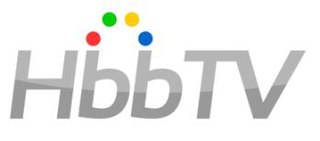
Hybrid Broadcast Broadband TV (HbbTV) is both an industry standard and promotional initiative for hybrid digital TV to harmonise the broadcast, IPTV, and broadband delivery of entertainment to the end consumer through connected TVs and set-top boxes. The HbbTV Association, comprising digital broadcasting and Internet industry companies, has established a standard for the delivery of broadcast TV and broadband TV to the home, through a single user interface, creating an open platform as an alternative to proprietary technologies. Products and services using the HbbTV standard can operate over different broadcasting technologies, such as satellite, cable, or terrestrial networks.
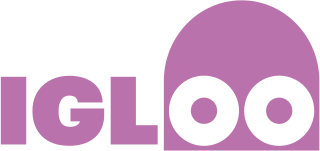
Igloo was a New Zealand prepaid pay TV service launched on 3 December 2012. The Pace supplied receiver provides customers access to free-to-air channels through Freeview, and previously a small selection of pay TV channels could be purchased for 30 days. On March 1, 2017 Igloo closed and the receiver was updated to allow viewers to use New Zealand's Freeview television service.
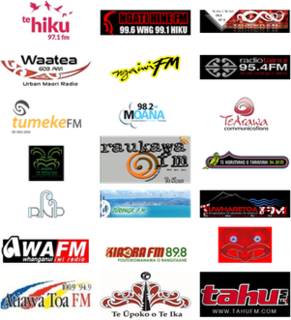
Te Whakaruruhau o Ngā Reo Irirangi Māori is a New Zealand radio network consisting of radio stations that serve the country's indigenous Māori population. Most stations receive contestable government funding from Te Māngai Pāho, the Māori Broadcast Funding Agency, to operate on behalf of affiliated iwi (tribes) or hapū (sub-tribes). Under their funding agreement, the stations must produce programmes in the Māori language, and must actively promote Māori culture.
Shine TV is a New Zealand Christian television channel operated by Rhema Media and broadcast on Freeview Channel 25 and Sky TV channel 201. The station promotes Christian lifestyles, traditional Christian values, Gospel teachings and interdenominational Christian unity. From its outset, it has focused primarily on children, young people and family audiences.

